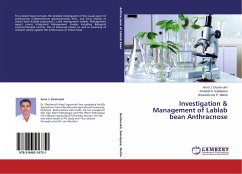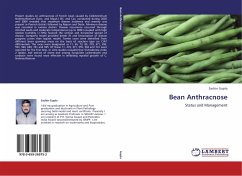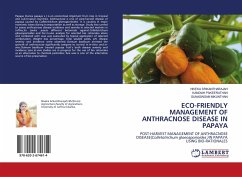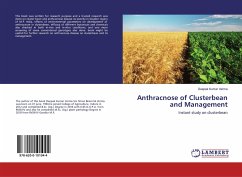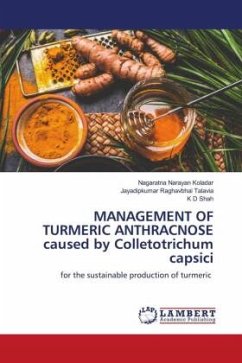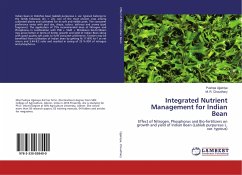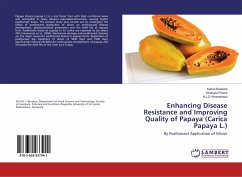
Integrated Management of Common Bean Anthracnose
Versandkostenfrei!
Versandfertig in 6-10 Tagen
33,99 €
inkl. MwSt.

PAYBACK Punkte
17 °P sammeln!
Bean anthracnose caused by Colletotrichum lindemuthianum is an important disease affecting common bean (Phaseolus vulgaris L.). In Ethiopia, this disease is one of the most destructive biotic constraints to common bean production. Information on yield losses and management options addressing both seed and soil-borne inoculum sources of this disease is lacking in Hararghe highlands which produces common bean in large areas. The objectives of this study were to evaluate the effect of integrated management of bean anthracnose through soil solarization and fungicides applications on epidemics of t...
Bean anthracnose caused by Colletotrichum lindemuthianum is an important disease affecting common bean (Phaseolus vulgaris L.). In Ethiopia, this disease is one of the most destructive biotic constraints to common bean production. Information on yield losses and management options addressing both seed and soil-borne inoculum sources of this disease is lacking in Hararghe highlands which produces common bean in large areas. The objectives of this study were to evaluate the effect of integrated management of bean anthracnose through soil solarization and fungicides applications on epidemics of the disease, and to determine the effect of integrated management of bean anthracnose on seed health as well as crop yield and yield components of common bean. Field experiments were conducted at the Haramaya University Main Campus and Hirna Research Sub-Station in 2010 main cropping season. Soil solarization was integrated with mancozeb and carbendazim seed treatments and with foliar sprays of carbendazim at the rate of 0.5 kg/ha at 10 and 20 days intervals. The experiment was arranged in 2 x 3 x 3 split-split plot design with three replications. A total of 18 treatments were evaluated.




